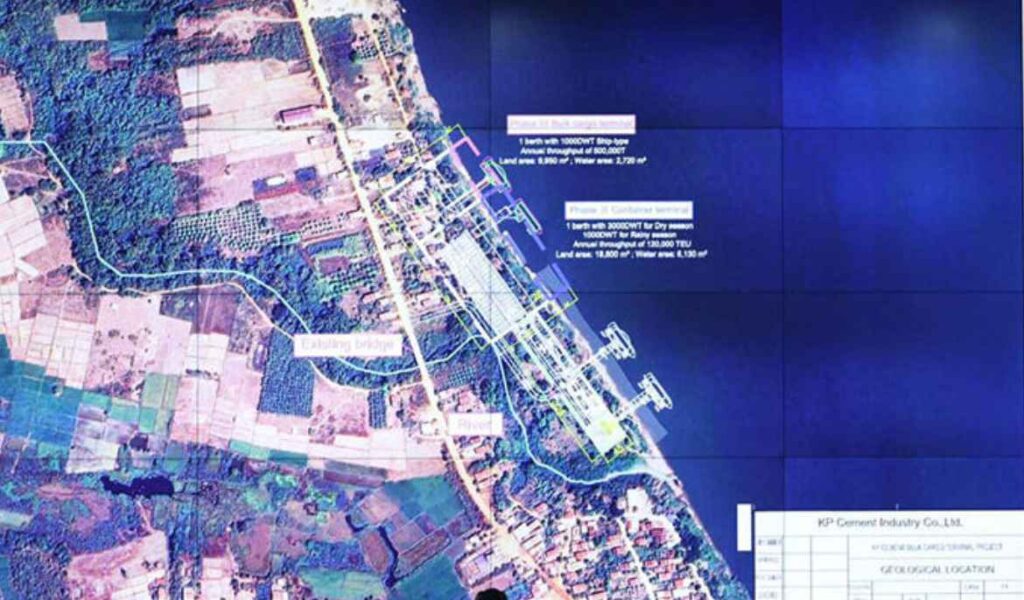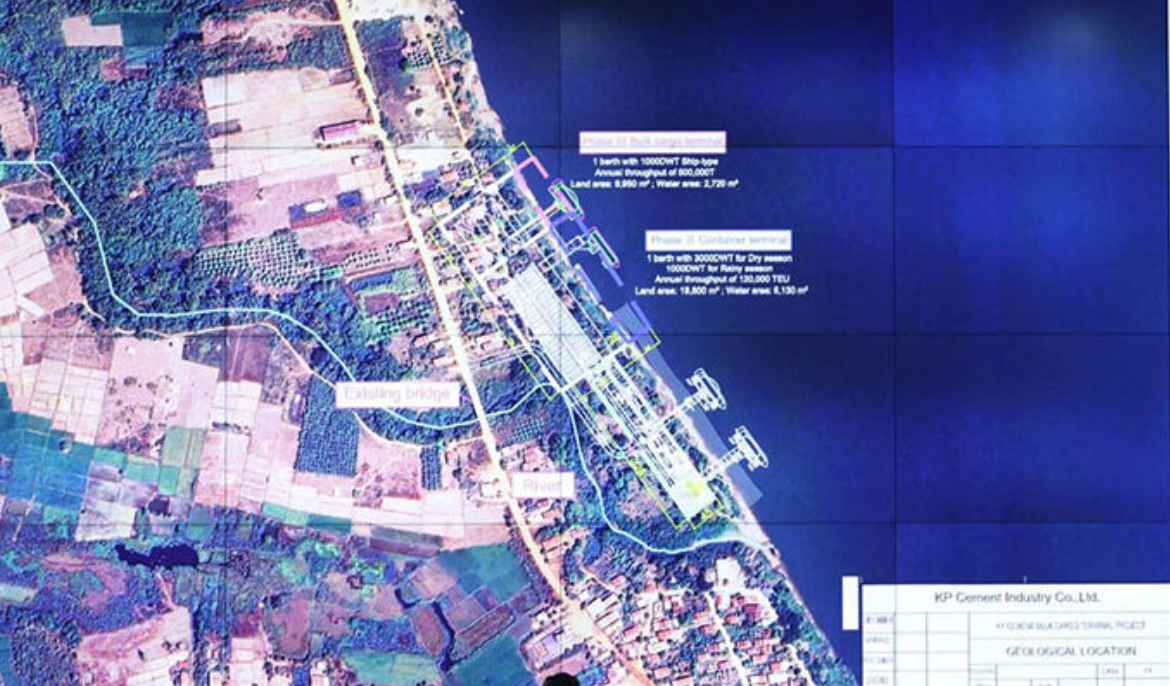A $35 million multipurpose port is planned for development in Preaek Prasab district, Kratie province, aimed at boosting investment and facilitating the transport of agricultural products as part of the government’s push to attract investors to the northeast under a special incentive programme.
Hean Sahib, Advisor to the Prime Minister and Chairman of the Northeastern Investment Promotion Working Group (NEIPWG), Wednesday met with the investor delegation at the Ministry of Economy and Finance to discuss their application for investment approval.
The project is proposed by KP Cement Industries Co., Ltd., a subsidiary of China Energy Engineering Group Co., Ltd. (CEEC), a Fortune Global 500 company headquartered in Beijing with operations in 140 countries. CEEC specialises in energy and infrastructure projects worldwide.
Sahib apprised the delegation on the Special Programme to Promote Investment in the Four Northeastern Provinces (SPIN Programme) 2025–2028, which offers targeted incentives, concessions, and streamlined procedures in both fiscal and non-fiscal areas.
“The programme prioritises sectors such as agriculture, agro-industry, and tourism in Kratie, Stung Treng, Ratanakiri, and Mondulkiri,” he said.
Launched on April 9 under the chairmanship of the Prime Minister, the initiative also established a dedicated working group to act as a single-entry point for reviewing projects, granting special incentives, and issuing permits under a “one-stop-shop” mechanism to ensure efficiency and transparency.
Officials said the planned port would be equipped with essential infrastructure to support investment activities and the transportation of agricultural goods, contributing to the economic development of Cambodia’s northeast.
It is worth noting that Peng Ponea, Minister of Public Works and Transport, also on Monday afternoon received a courtesy call from KP Cement Industry Co., Ltd to discuss its planned port project in Kratie province.
Officials said the discussion focused on understanding the legal framework and regulatory requirements for the construction and operation of the multi-purpose port, which is intended to support both investment activities and agricultural product transportation in the northeastern province.
Meanwhile, the government said that SPIN Programme 2025–2028 aims to drive inclusive growth by attracting private investment and integrating the remote provinces into the national development agenda.
The programme focuses on agriculture, agro-industry and tourism — sectors where the region holds natural advantages, from fertile land and a favourable climate to rich biodiversity.
To lower barriers for investors, the government has reduced the minimum capital requirement to $100,000, introduced targeted incentives, and set up a SPIN Working Group to act as a one-stop service for approvals, permits and licences.
For decades, the northeast has remained outside the country’s main growth corridors. The government hopes that with coordinated incentives and infrastructure upgrades, it will emerge as Cambodia’s next economic growth engine.
The private sector has welcomed Cambodia’s ambition to transform its four northeastern provinces — Kratie, Stung Treng, Ratanakiri and Mondulkiri — into a dynamic investment zone and the country’s fifth economic pole.
Noun Rithy, Chairman of the Board of KFA Group, told Khmer Times that the government’s regional clustering approach is creating distinct investment opportunities while aligning with the nation’s broader economic development goals.
“Through the SPIN Programme, the government is leading efforts to attract both domestic and international investment into the northeast,” Rithy said. “This clustering approach enables policymakers to focus on critical areas such as human resources, technology, transportation, electricity and infrastructure.”
Rithy noted that infrastructure in the region has improved significantly in recent years, particularly in road networks and telecommunications. The provinces’ proximity to Laos and Vietnam, he added, strengthens their appeal for agro-industrial development, especially in crop cultivation and food processing for export.



